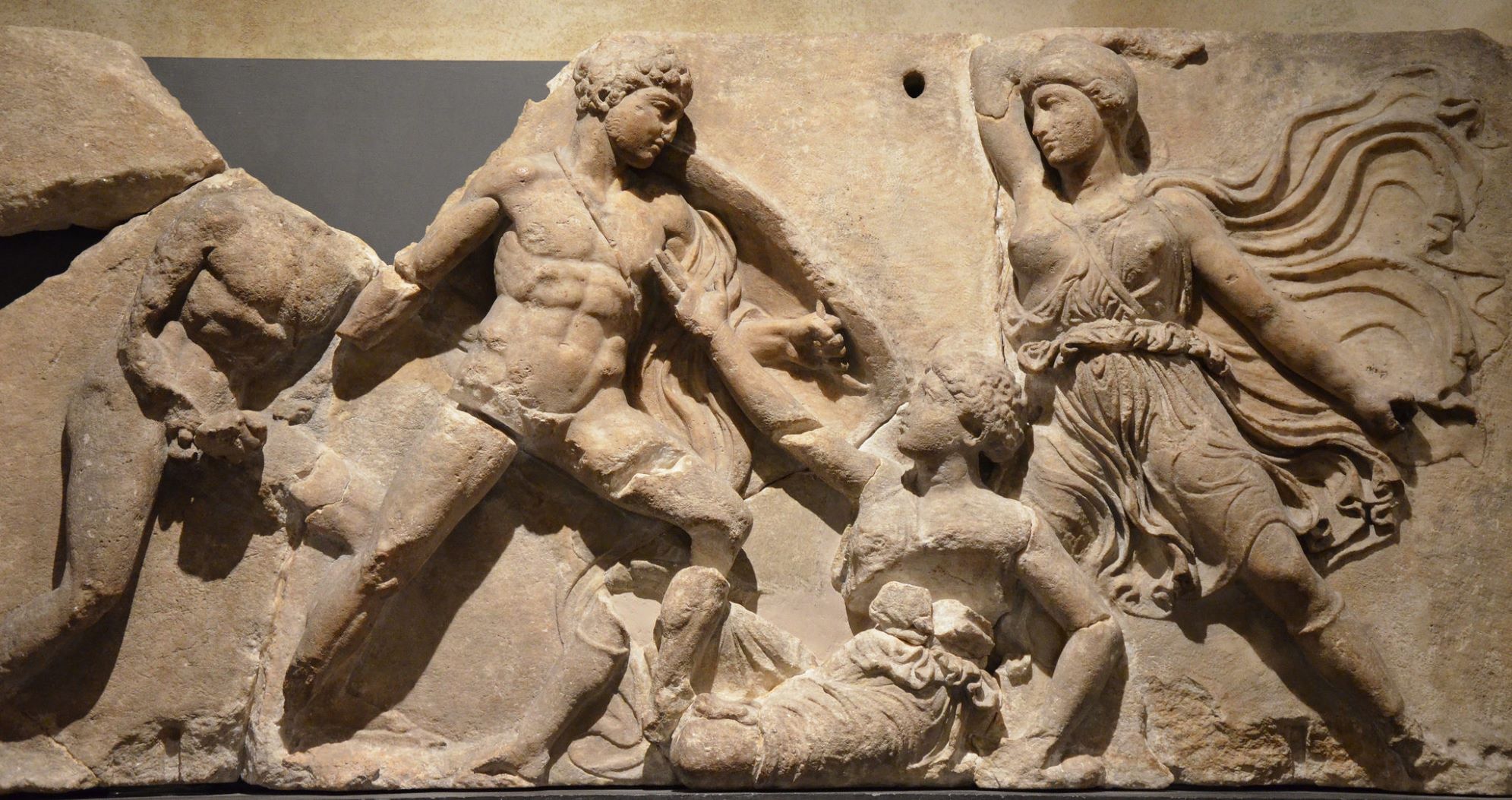
Women warriors appear in myths across the world. According to Greek mythology, the Amazons were a group of female soldiers famed for their ferocity and skill in battle. Meanwhile, the Vikings believed in the mythical Valkyries who carried worthy warriors to Valhalla.
Although soldiering has typically been a male pursuit throughout history, there are several examples of women taking to the battlefield. Women have fought either in entirely female units or amongst their male counterparts in mixed units.
Steppe peoples
The Eurasian Steppe has been home to many nomadic equestrian groups over the course of history. During the Bronze and Iron Ages, women from several cultures in this vast region may have fought alongside men.
The majority of evidence concerning warrior women of the steppe comes from archaeological finds in Eastern Europe and Central Asia. Female remains from several ancient cultures have been discovered, for example, in kurgans (burial mounds) alongside objects implying they were warriors.
Some burials belonging to the Sauromatian culture, which inhabited southern Russia in the 4th and 6th centuries BC, have also been found to contain the remains of women buried with arrowheads and quivers.
Even more finds of a similar nature have been unearthed belonging to the closely-related Scythian and Sarmatian cultures. The Scythians dominated the Pontic Steppe from the 7th century BC until the 3rd century BC. The Sarmatians thrived in roughly the same region between the 3rd century BC and 4th century AD.
Anthropologist David Anthony has observed that roughly twenty percent of Scythian and Sarmatian graves excavated in the lower Don and Volga regions containing artifacts associated with warriors belonged to women.
Kurgans containing the remains of “warrior women” continue to be found.
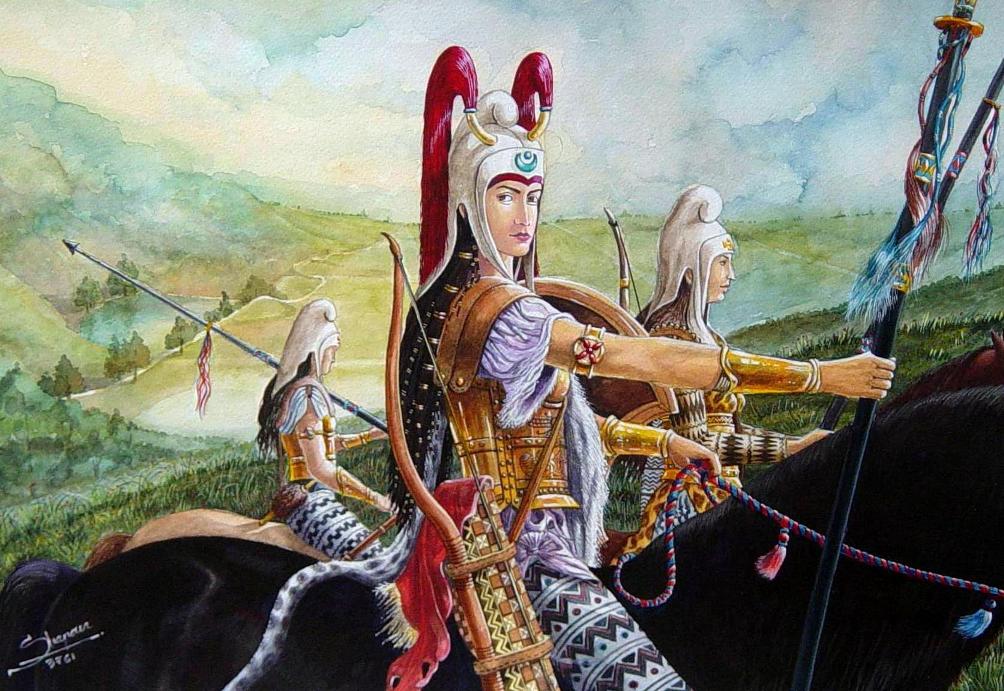
In 2019, two burials were discovered in Russia dating back to the 4th century BC. Archaeologists found the skeletons of two women buried alongside horse riding equipment and weapons, including iron daggers and thirty arrowheads.
Female steppe warriors probably fought as horse archers. For centuries, nomads from the Steppe were feared in Europe and Asia for their ability to shoot arrows from fast moving horses. Their mobility on the battlefield gave them an advantage over more cumbersome enemies.
Warrior Women of the Illyrians
The Illyrians were a group of Paleo-Balkan peoples who inhabited the Western Balkan Peninsula across land that today forms parts of Albania, Croatia, Montenegro, Kosovo, Bosnia and Herzegovina, and some parts of Serbia and Slovenia.
Illyrian women had more freedom than their Greek and Roman contemporaries. Eduard Shehi, an archaeologist from Albania’s Institute of Archaeology, notes: “There are ancient writers’ accounts of Illyrian women going with their husbands to a banquet, drinking with them and even raising a toast, something unacceptable in ancient Greece or Rome.” They may also have accompanied the men to battle.
References to Illyrian women on the battlefield come mostly from Greek sources. One of Philip II of Macedon’s wives, Audata, was an Illyrian. Contrary to Macedonian customs, Audata taught their daughter Cynane (Greek: Κυνάνη or Κύνα) how to fight.
Polyaenus, a 2nd AD Greek author, wrote that Cynane “was famous for her military knowledge; she commanded armies, and in the field charged at the head of them. In an engagement with the Illyrians, she herself slew their queen with a fatal blow to the throat; and she defeated the Illyrian army with great slaughter.”
After her half-brother, Alexander the Great, died in 323 BC, Cynane was embroiled in the struggles to carve up his empire. Alcetas, one of Alexander’s generals, murdered her, however, in 323 BC.
Before her death, Cynane had taught her daughter Eurydice (also called Adea) the martial arts that she had learned from her own mother. Eurydice followed in her footsteps and was active in the successor wars. Alexander’s mother, Olympias, outplayed her nevertheless and Eurydice committed suicide in captivity.
In the 3rd century BC, another Illyrian woman became famous for her military exploits. Teuta of the Illyrian Ardiaei kingdom was pronounced queen regent when her husband Agron died.
Queen Teuta continued her husband’s expansionist foreign policy and was successful in multiple conflicts against neighboring Greek states.
However, Teuta’s decision to sponsor Illyrian pirates angered the Romans, whose trading vessels were attacked across the Adriatic Sea. The Romans sent ambassadors, but she murdered one and imprisoned the others.
The Romans responded with an invasion which resulted in the First Illyrian War and ultimately triumphed. Yet Teuta remained in power and the Ardiaei kingdom retained its autonomy until 168 BC, when they were defeated again by the Romans in the Third Illyrian War.

Today, Queen Teuta is regarded as a national heroine in Albania and is featured on Albanian currency.
Due to the lack of concrete evidence, it is difficult to determine whether Illyrian women were a common sight on the battlefield. Several literary sources describing the military education of Illyrian royal women seems to suggest that at least some Illyrian women belonging to the nobility were trained for war with the expectation that they might see combat.
Onna-musha: Japan’s Samurai women
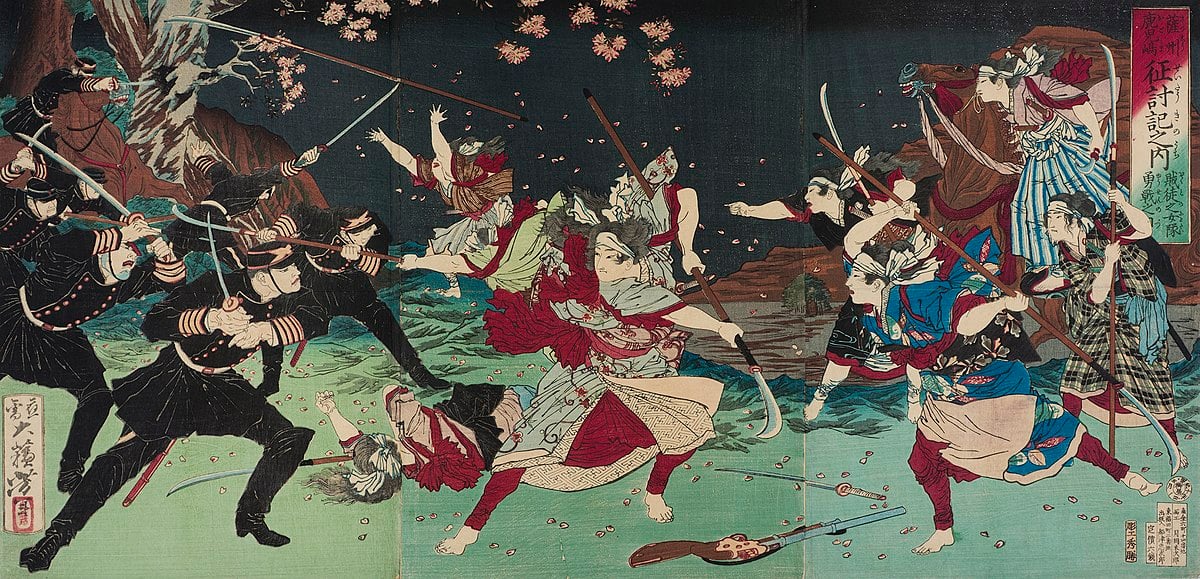
The onna-musha were female warriors who fought throughout pre-modern Japanese history. They took part in many of the same battles as their more famous male samurai counterparts. References to the onna-musha are quite extensive. The most famous were Tomoe Gozen and Hangaku Gozen, who fought on opposite sides of the Genpei War in the 12th century.
Tomoe Gozen is described as an exceptionally capable soldier in the 14th century epic, The Tale of the Heike:
Tomoe was especially beautiful, with white skin, long hair, and charming features. She was also a remarkably strong archer, and as a swordswoman she was a warrior worth a thousand, ready to confront a demon or a god, mounted or on foot. She handled unbroken horses with superb skill; she rode unscathed down perilous descents. Whenever a battle was imminent, Yoshinaka sent her out as his first captain, equipped with strong armor, an oversized sword, and a mighty bow; and she performed more deeds of valor than any of his other warriors.
At times, the onna-musha appear to have fought in exclusively female units. Writing in the 14th century, Tōin Kinkata mentioned the existence of a cavalry force mostly comprised of women.
In the 16th century, Ikeda Sen, a female samurai, is believed to have led a unit of two hundred women musketeers. She may have fought in the battles of Yamazaki, Shizugatake, Komaki, and Nagakute.
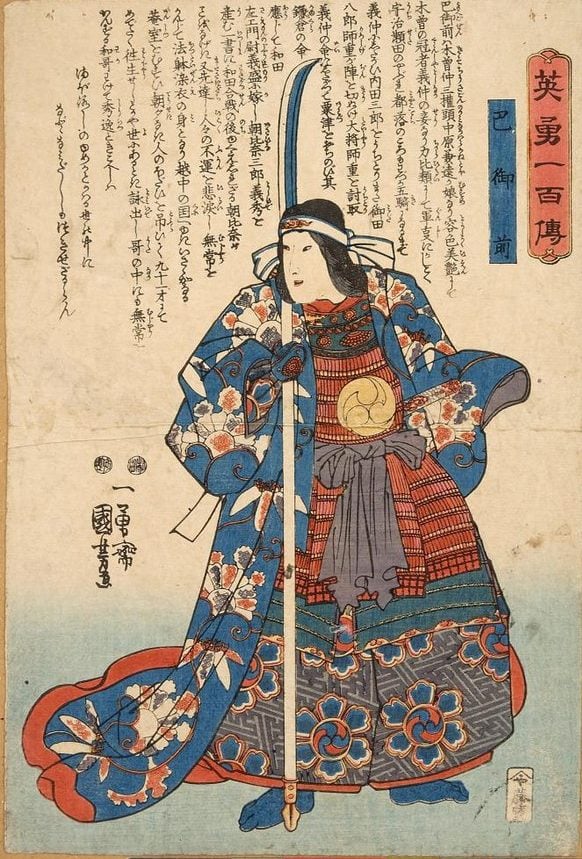
The archaeological record supports literary evidence that women sometimes took part in feudal Japanese battles. For example, DNA analysis conducted on 105 skeletons excavated from the Battle of Senbon Matsubaru revealed that thirty-five of them were women.
The naginata is the weapon most commonly associated with the onna-musha. It was a polearm with a long wooden handle and a curved blade. Its wielder would have enjoyed the reach advantages of a spear with similar cutting potential to a sword.
The onna-musha almost certainly used a variety of other weapons. Bows, shot from horseback or on foot, swords like the katana, and spears were all probable weapons of choice. When firearms like the tanegashima became available, these were also used by the onna-musha.
Dahomey Amazons
The Dahomey “Amazons” were an all-female unit loyal to the king of Dahomey, a highly militaristic West African kingdom located in what is today the Republic of Benin. They were active in the 18th and 19th centuries.
European explorers and traders who encountered this female force referred to them as Amazons, in reference to the Greek myth. In their own language, the Dahomey called them Ahosi (‘king’s wives’) or Mino (‘our mothers’).
The Dahomey Amazons were likely institutionalized as a fighting force by King Gezo in the 19th century. However, a force of fighting women appears to have been used by the kings of Dahomey since the 18th century.
In the 18th century, several European explorers noted that King Agaja kept a force of female palatial guards. Agaja would not permit men to remain in the palace after sunset, so an exclusively female force was required to guard the king.
Women warriors appear to have been largely confined to palatial guard duties until Gezo’s reign. This was not an entirely uneventful duty. Violence often accompanied the death of a Dahomey king until the succession was secured.
According to a British trader who visited Dahomey in the late 18th century, 285 women were killed during fighting in the palace after the death of King Tegbesu in 1774.
King Gezo is largely credited with deploying women on the battlefield. He also appears to have started recruiting female captives of war, whereas his predecessors largely depended on their many wives to fill the ranks.
Estimates on the size of the Amazon force vary greatly. Some European travellers report numbers as low as two to three hundred, whereas others reported a force of six to eight thousand.
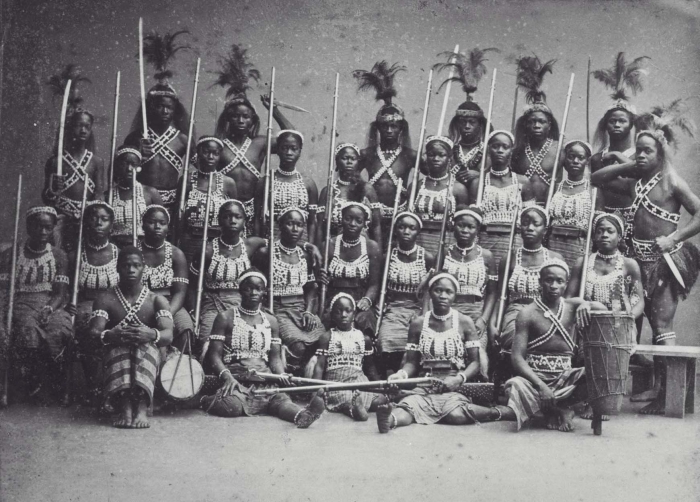
Dahomey Amazons fulfilled several roles on the battlefield. Most of them fought as riflewomen and were armed with muskets, and later, lever action Winchester rifles. Archers also existed, but bows were phased out in favor of firearms. Some Amazons functioned as gunners and operated artillery. Knives, clubs, spears, and swords were used in close combat.
The Dahomey Amazons served in conflicts against rival African kingdoms and the Europeans from around the mid-19th century.
Europeans who encountered the Amazons often held their fighting prowess in higher esteem than the Dahomey men. For example, a British diplomat noted that the women delivered more accurate fire than the men because they shouldered their muskets, unlike the men who hip-fired. Similarly, the French reckoned the men took around fifty seconds to reload, whereas the women could reload in thirty.
The “Amazons” were disbanded after the Second Franco-Dahomean War (1892-1894). Most of the female corps were wiped out in the Battle of Adegon during a French bayonet charge.
See all the latest news from Greece and the world at Greekreporter.com. Contact our newsroom to report an update or send your story, photos and videos. Follow GR on Google News and subscribe here to our daily email!



